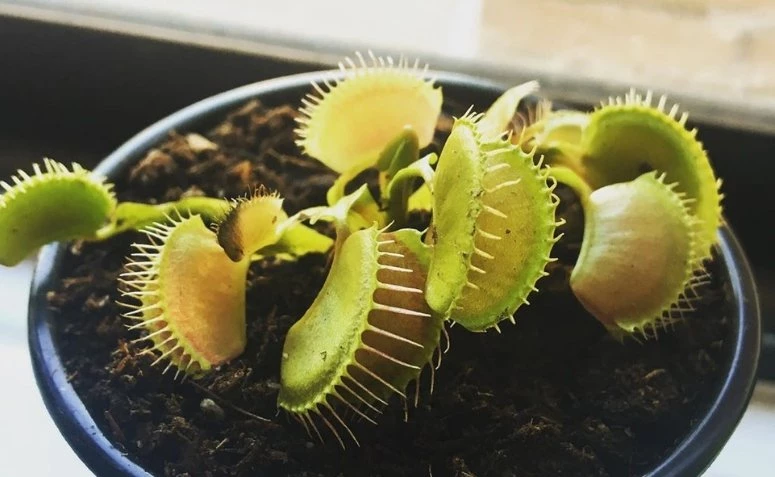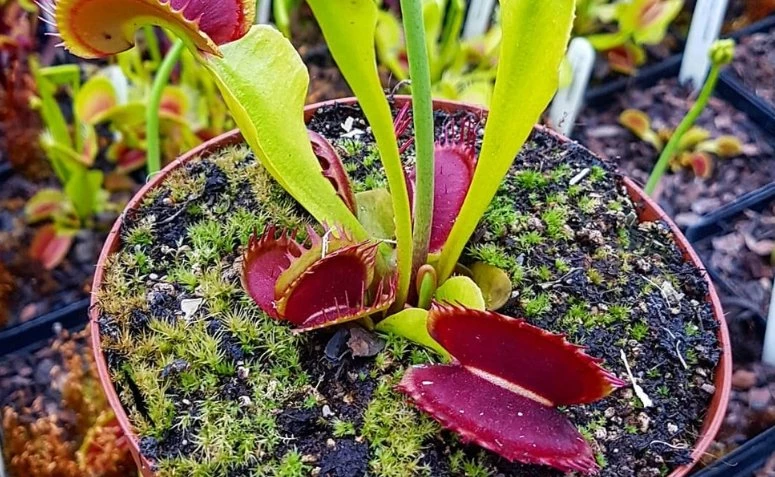Table of contents

Flowers and plants make any space more charming, beautiful and colorful, but it is necessary to know how to take care of them in the right way. Carnivorous plants, although they are not very common in gardens or decorations, present a more exotic and unique look. Besides making your room more beautiful, we guarantee you that having one of these species at home is very interesting!
Carnivorous plants are very easy to care for, but they also require a little attention, so we have selected some videos that will show you how to take care of your carnivorous plant.
How to care for carnivorous plants
The carnivorous plants are species that live in humid soils and require some care not to wilt. Watch some videos that will teach you what is necessary to guarantee a healthy and beautiful plant all year round.
How to care for and grow Dionaea Muscipula
In addition to telling you the average value of this species, this video will explain how you should care for and grow the Dioneia Muscipula. It loves full sun, and to ensure beautiful and healthy foliage, it is recommended to leave it in a sunny, well-ventilated place.
How to care for Dionaea and Nephentes
The video presents two species of carnivorous plants, the Dioneia and Nepenthes, and how you should take care of them so that they survive throughout the year. Both like a lot of sun and their soil should be moist, but be careful not to overdo it and drown your little plants!
How to grow carnivorous plants
This video will teach you how you should plant your carnivores. Before being placed in a pot for planting, the substrate for carnivorous plants is boiled in hot water to eliminate any fungus that could harm the growth of the species.
See_also: 55 table arrangements with the power to make any room specialHow to care for Nepenthes
Nephentes is one of the most beautiful carnivorous plants that exists. To have one at home, you need to know the best way to take care of it. That's why we brought this video that, besides telling some curiosities about the species, will explain you how it should be taken care of.
How to germinate Dionaceae seeds
Learn step by step how you should germinate the seeds of Dionaceae and, in a short time, have a beautiful carnivorous plant to decorate your home and scare away mosquitoes and flies! The tutorial uses specific moss for this type of plant.
You thought it would be more difficult, didn't you? Besides being very easy to care for, your carnivorous plants will be a great ally in case there are a lot of flies or mosquitoes around.
5 curiosities about carnivorous plants
Besides devouring mosquitoes and other small insects, carnivorous plants are species that present curiosities:
- Did you know that there are more than 500 species of carnivorous plants scattered around the world? They are easily found in warm areas and humid tropical forests. Brazil is considered the second country to have more carnivorous plants in its territory.
- Researchers say that carnivorous plants have existed for about 60 million years, as far back as the dinosaurs! Many believe that they evolved because when it rained, their surface created a puddle of water that attracted insects to drink.
- Besides attracting insects and other small animals, catching and eating them, did you know that carnivorous plants are able to take nutrients from their prey in order to survive?
- Although they capture living beings, it is important to mention that they do not actively capture. In other words, they have in their composition a mechanism of true traps. Thus, they attract, trap, and feed on their prey.
- The species of the Nepenthes family is characterized by a pitcher that is capable of holding up to five liters of water. Besides reaching a very tall height, this plant can attract slightly larger prey, such as frogs, spiders, and lizards.
Each species has its own type of trap, while some trap the insect, others can suck them in. Incredible, isn't it? Now that you already know some curiosities about these plants, here are some species to have at home!
See_also: CD Craftsmanship: 40 ideas for reusing compact discsCarnivorous plant species
As said, there are hundreds of species of carnivorous plants, so you will get to know some that are part of this plant group. Check them out:

- Dionaea: Being one of the best known, this plant is marked by filamentous leaves that stay open all the time and, when a fly or other small insect lands on its surface, they close in a few seconds caging the prey.
- Drosera: Already this species is characterized by its long tentacles that are covered with small filaments and a sticky substance. When the insect lands on one of its leaves, the tentacle begins to curl up and carry the prey to the center of the carnivorous plant.
- Sarracenia: As long tubes, this carnivorous plant has a very pleasant smell, and through its aroma it attracts the small insects that look for flowers to pollinate. It is one of the hardiest carnivorous plants and easily adapts to very hot or very cold climates.
- Utricularia: Being an aquatic species, this carnivorous plant has beautiful flowers that can be found in different colors. It is considered the fastest species of all to capture an insect. Through suction, the utricularia has hairs and filaments that help it trap its prey.
- Nepenthes: Also known as monkey's cup, these climbing vines are very fond of humid climates. Their main characteristic is the vase-like shape that stores water to attract prey. When an insect falls into the cup, the filaments covering the ends of the plant turn downward, leaving the prey with no way out.
- Darlingtonia: this plant captures its prey when it enters a hole in the tip, which is surrounded by a sticky secretion. darlingtonia is more complicated to cultivate, because its root needs to be always cold, i.e. it is often necessary to put ice cubes in it on hot days.
- Heliamphora: Finally, this beautiful carnivorous species has a similar shape to the serracenia. What differs between the two plants is that this one does not have a "lid", but a structure called a "nectar spoon". Through its vibrant colors and delicious aroma, insects are attracted to this carnivorous plant. Like many others, it likes humidity very much.
One more beautiful and amazing than the other, isn't it? It is important to mention that these species like the humid climate very much, so it is important that their soil be soaked. But be careful not to overdo it!
Now that you know how to care for a carnivorous plant, go to your nearest florist shop and buy your newest plant to decorate your home! It is very important to know the particularities of the chosen species to know the best way to care for it.


